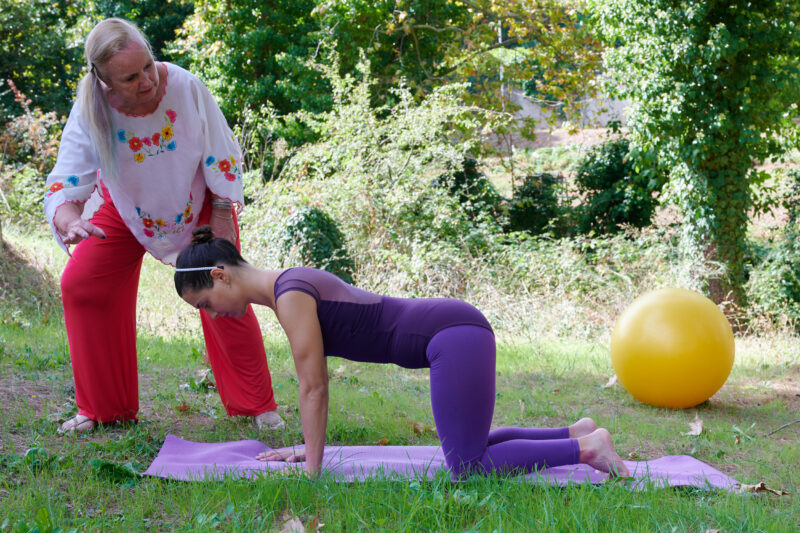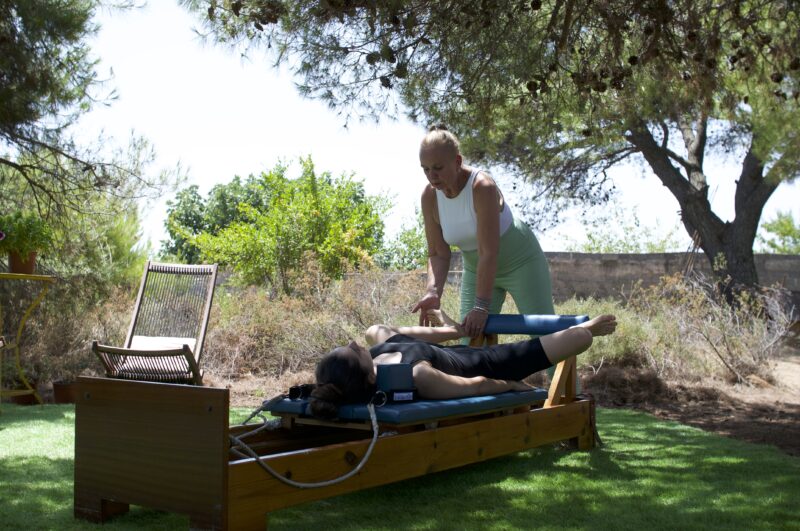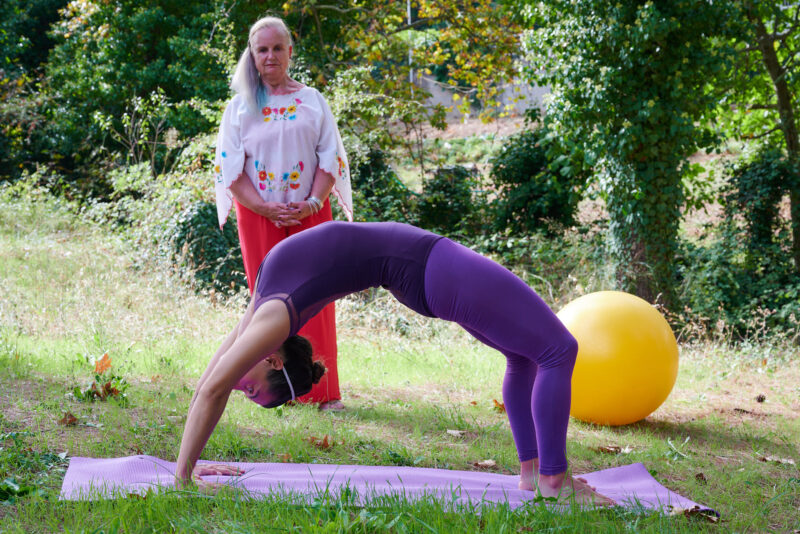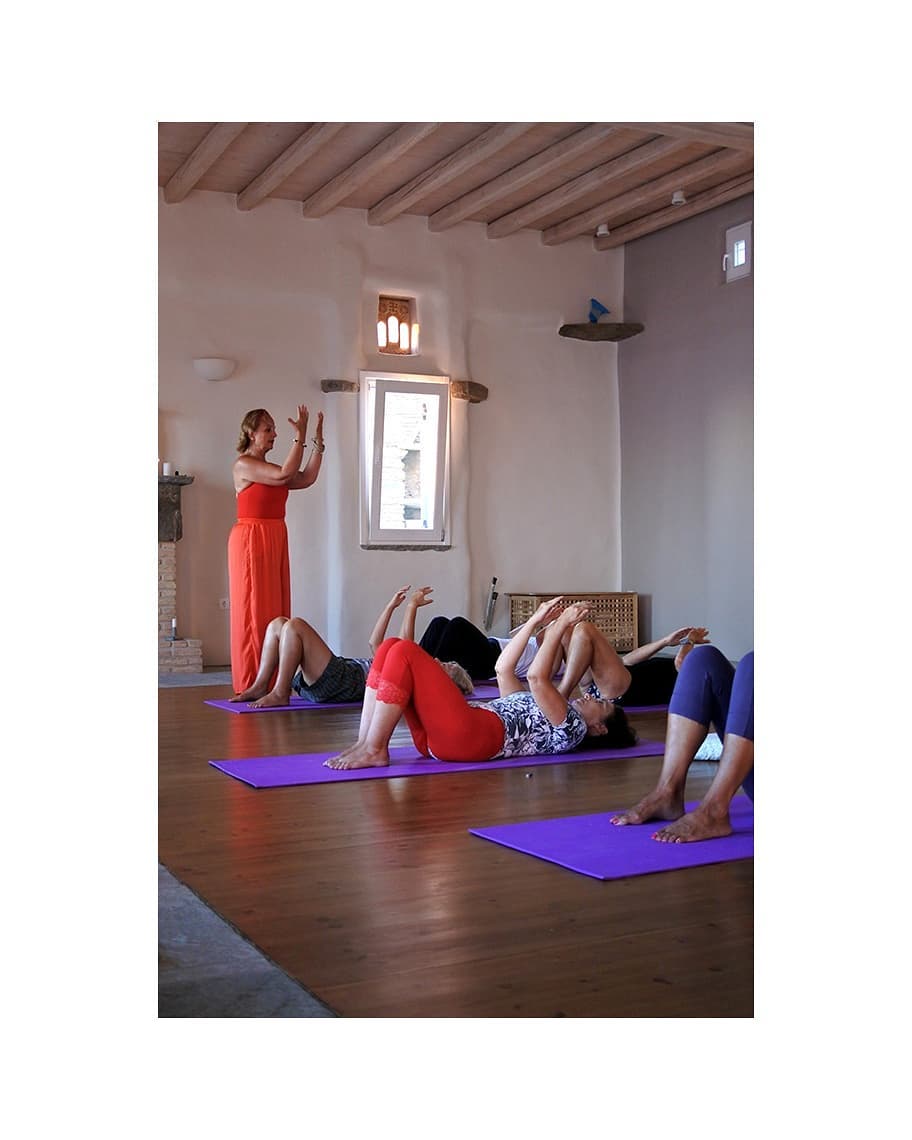Joseph Pilates referred to 4 different positions of the spine.
Second position of the spine is when the spine is “straight”. Second spinal succession is when the spine moves from another position to straight in sequence.

THE NATURAL CURVES OF THE SPINE PROTECT US FROM INJURY
The vertebral column retains it’s natural curves, when we are in second position of the spine, as these curves work like shock absorbers.
Joseph Pilates knew that many people often place a lot of strain on the lower back especially the area of the 5th lumbar and sacrum. He would therefore ask people to subtly lengthen the tail to the coccyx. This results in an equally subtle engagement of the pelvic floor and in sequence the deep abdominal muscles. It is a very subtle adjustment. Doing it too much would result in a slight tucking of the tail bone. Over time that would lead to the lumber curve being reduced, which in turn would cause imbalance and injury.
RELEASING YOUR TAIL
See the video, “Bouncing on a Pole”. https://youtu.be/yaw_1VdT4N8 An exercise which teaches not just the importance of the suppleness of the feet but, the bouncing motion gently encourages the release of the hip joints and an allowing of the coccyx or tail bone to hang and lengthen. It is sometimes useful to imagine that we actually do have a tail.
When we are in the second position of the spine or when we are moving into it our focus is on the centre of the spine, or the spinal cord.
POWERFULLY IMAGINING AN EXTENDED AXIS

Imagining the axis is a very powerful addition to focusing into the center of the spine. It serves as a guide for the spine. Imagine a line of light that starts directly above the crown of the head ( the part of the head which is soft when we are babies). This line of light is like a plumb line, if we are upright, which travels down through the body exits through the pelvic floor and goes deep into the earth between our feet.
I have found it very effective for people to imagine their axis as being longer than their physical body. I have noticed that spines get longer, when people visualise the axis in this way. This freeing and creating space in the spine is important for us all, in particular for people with conditions like scoliosis.
POSITIVE PSYCHOLOGICAL EFFECTS.
A longer spine makes people feel taller and more self confident. It has a positive psychological effect.

This axis can be imagined in any position, standing, sitting, on all fours, on a diagonal like the position we take when we do Front Support.
THE TRIANGLE OF THE PELVIS
When we are in the Second Position of the spine the pelvis is in a neutral position. It is neither tilted forward or back. How can we check this? When we lie on our back, we can place our hands over the lower part of the belly. Our fingertips are on our pubic bone and part of our arms end up resting on the front of our iliac crests. We can imagine these 3 points are like a triangle. The three points of the triangle are all on the same level parallel to the floor. The same principles apply in the upright position, the three bones of the triangle of the pelvis are on one plane.
A HAPPY SPINE IS ONE THAT IS FREE TO MOVE
In finding the second position of the spine it is essential to remember that the spine and the segments of the spine need to be free, free is move effortlessly. We often mistakenly gather tension at the base of the spine and at the top. Check yourself out. Do you feel as if there is a hand wrapped around the bottom of the spine squeezing it? If so let it go. The same goes for the cervical spine which is like a tail at the other end. Remember the top vertebra is just behind the nose. Explore releasing it. In the cranial sacral work, the bones of the head are often viewed as the last vertebrae. I have found this to be a useful view in achieving a continuation of the energy beyond the top of the head without tension.
CONNECTING WITH YOUR ROOTS AND YOUR SENSE OF LIGHTNESS
When moving into the second position, spinal succession, it is possible to start at either the top or bottom according to the type of movement. I have found that moving from the tail up gives a better sense of grounding and moving from the cervical spine down, a lightness. Think about the movement you are doing and choose, consciously, according to what you may wish to achieve and the movement.
USEFUL VIDEOS
There are two videos on You Tube which are about Footwork on the Reformer. https://youtu.be/Vnfw4wkG35k The exercises are done in the Second position of the spine and we I do focus a great deal on creating space in the spine even though the exercises are with the resistance of the springs. https://youtu.be/zvWamobo9FI You may find them interesting.
Enjoy your practice!
Copyright: Jenny Colebourne.



















